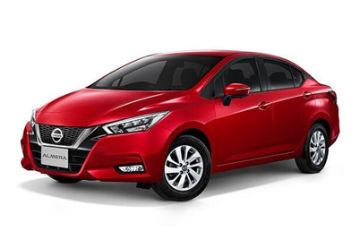![2022 Nissan Almera: Price start at Php779,000, Is It Worth Buying? 01]()
Smart and practical shoppers usually know where to buy cheaper options. They usually know what brands or what products give more value for the money. They know how much a potato at the grocery store should cost. Because aside from the fact that they keep themselves updated, they canvass. Canvassing allows shoppers to gauge which store sells the cheapest or which store has the best quality. The same principle applies to vehicles. Smart and practical buyers know where to put their hard-earned money.
![2022 Nissan Almera: Price start at Php779,000, Is It Worth Buying? 02]()
Among entry-level subcompact sedans available today, the Toyota Vios still has the crown for being the best-selling model. It has been trusted by Filipinos for decades now. But a fresh new contender, the Nissan Almera, is turning out to be a worthy option. Does its Php779,000 to Php1,098,000 price tag make it more valuable than the best-selling Toyota Vios? Let's find out.
![2022 Nissan Almera: Price start at Php779,000, Is It Worth Buying? 01]()
Certainly, on price alone, we cannot assume that one vehicle is better than another. Especially if they sit closely at the pricing table. But the Nissan Almera slots itself between the Toyota Vios and the Honda City in terms of price. It's not as affordable as the cheapest Toyota Vios, but the price is still lower than the Honda City. Given its market positioning, what can one get from Almera?
![2022 Nissan Almera: Price start at Php779,000, Is It Worth Buying? 02]()
Under the hood is a 1.0-liter 3-cylinder turbocharged gasoline engine that makes 100 ps and 152 Nm of torque. This is mated to either a CVT or a 5-speed manual transmission. Now, the actual performance of that engine and transmission is somehow not as lively as its rivals. We have known Nissan for the stunning performance of its other models like the Navara, Terra, and of course, the GT-R. However, it seems that this Japanese automaker has taken a different route when it comes to achieving efficiency.
With its integrated engine start-stop system, the Almera has an impressive fuel economy of 14 kilometers per liter under light traffic situations inside the city. This is almost double what its competitors can give you. And to be honest, that matters a lot, especially with today's skyrocketing fuel prices. But to do so, the Almera had to be equipped with a CVT. That's what is holding it back from any semblance of urgency in its drive.
![2022 Nissan Almera: Price start at Php779,000, Is It Worth Buying? 03]()
When it comes to aesthetics, I must say that I see value. Although not the best looking in the subcompact sedan lineup, it is a big jump in design compared to the third-generation Almera it replaced. In terms of safety, it comes loaded with a driver, front passenger, and side curtain airbags, along with Vehicle Dynamic Control that uses engine and braking to keep the car steady in extreme maneuvers.
Overall, the Nissan Almera can be considered a value-laden proposition. Car shoppers would do well to add one to their consideration list.
![2022 Nissan Almera: Price start at Php779,000, Is It Worth Buying? 04]()
Also read: The Catch Behind the Fuel Economy of the Nissan Almera










